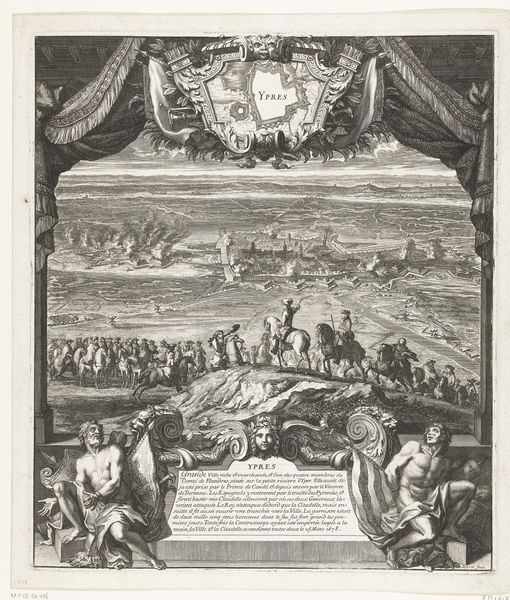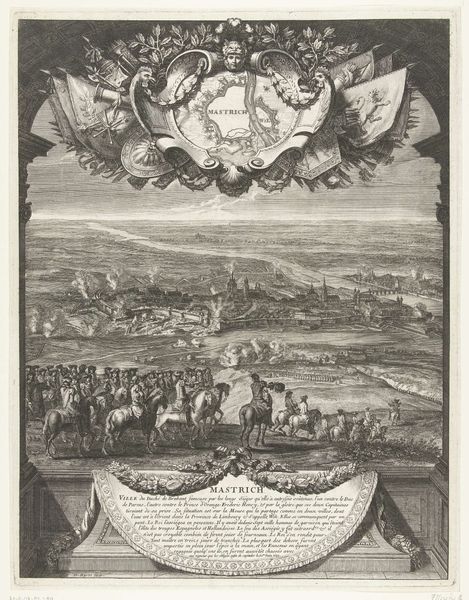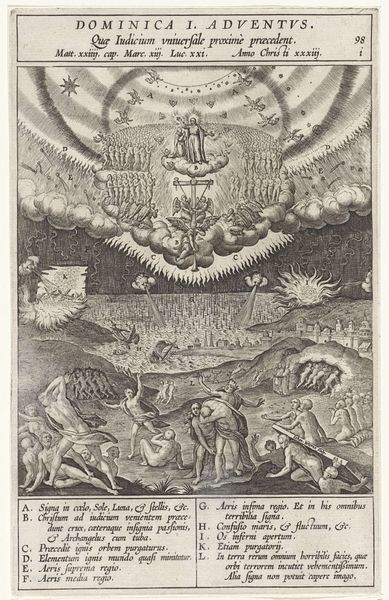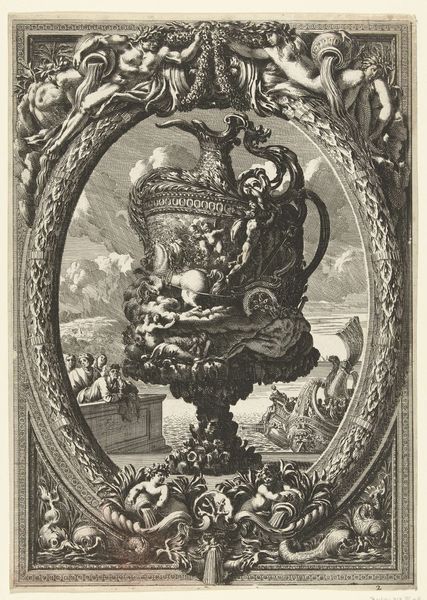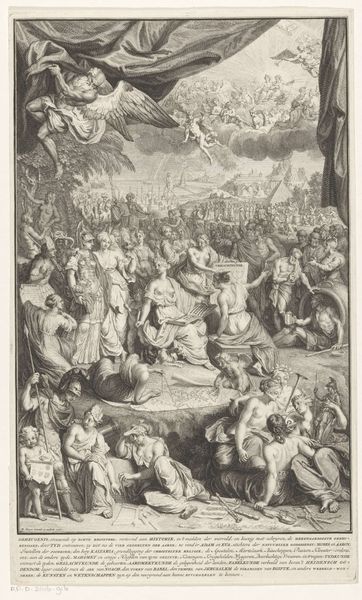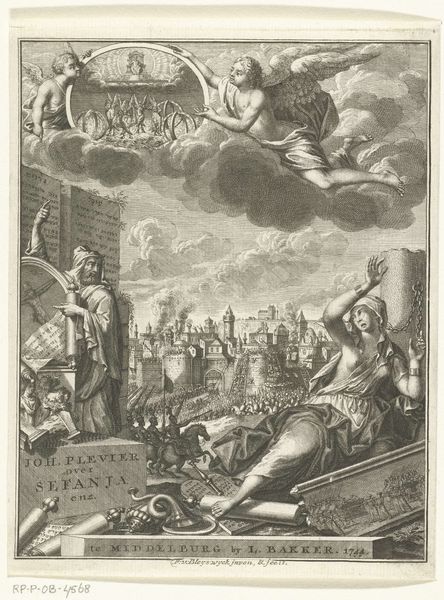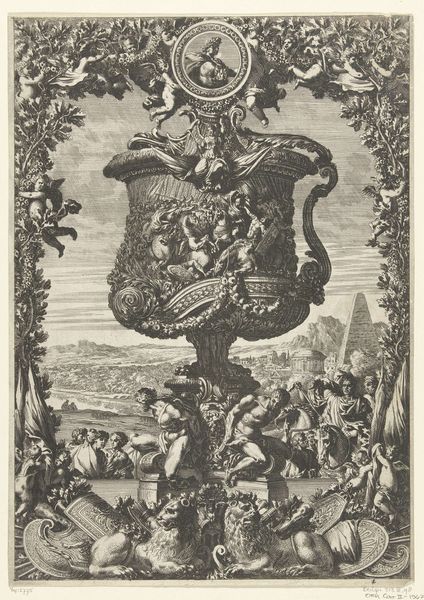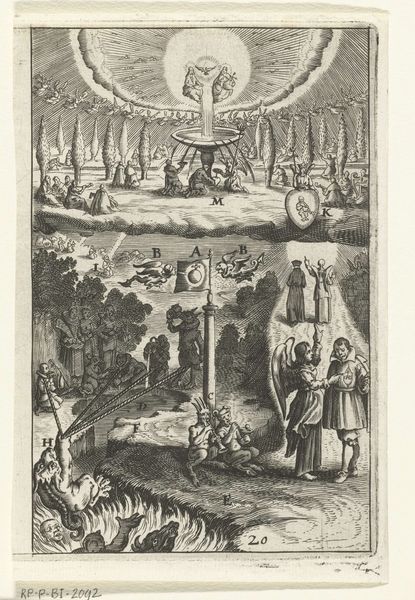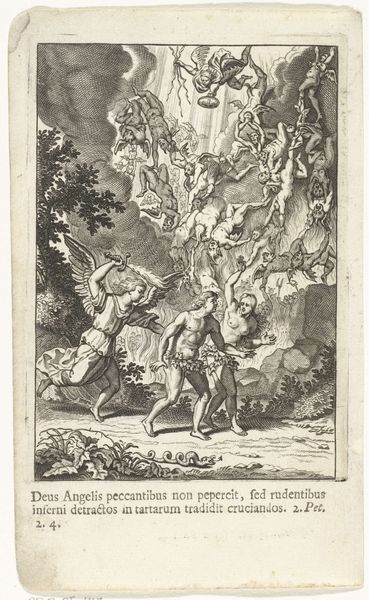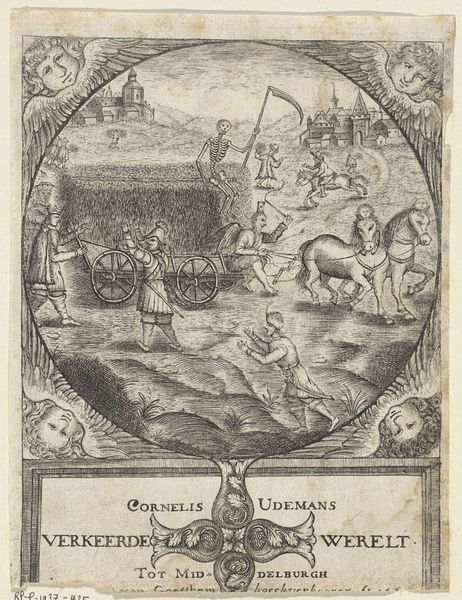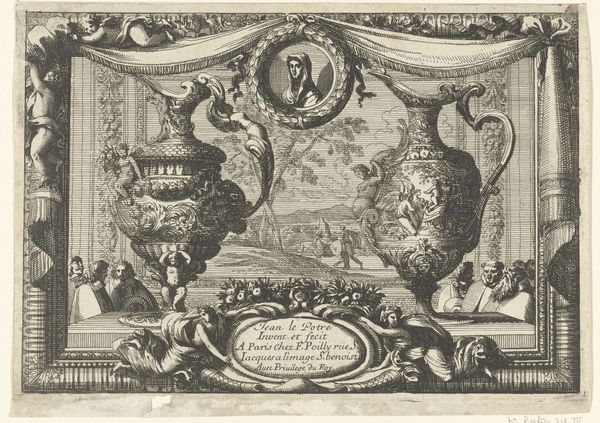
Titelpagina voor De Veldgezangen van Thyrsis, van Willem Mylius, Leiden, 1705 1702
0:00
0:00
print, paper, engraving
#
allegory
#
baroque
# print
#
landscape
#
paper
#
engraving
Dimensions: height 186 mm, width 143 mm
Copyright: Rijks Museum: Open Domain
Editor: Here we have Hendrik Elandt's engraving, the title page for "De Veldgezangen van Thyrsis", from 1702. I find the composition quite striking, the way it is framed by what appears to be a stage curtain. What do you make of this elaborate visual arrangement? Curator: Indeed. The framing you observe initiates a compelling interplay between interiority and exteriority. The Baroque aesthetic here emphasizes ornamentation and grandeur. Note how the artist employs diagonal lines of composition, creating dynamism across the image, and drawing the viewer's eye through various planes of action, almost as if deconstructing theatrical staging. Editor: Can you elaborate on those planes of action? I am especially intrigued by the characters depicted in the various layers of this artwork. Curator: Certainly. At the apex, winged cherubs guide a chariot through a sky, contrasted by a classical tableau featuring satyrs and nymphs cavorting on what we can call the middle plane, and framing them all, notice that two other sets of figures function structurally to delineate upper from lower. Tell me, where does your eye go first, and where does it travel? Editor: I'm initially drawn to the inscription at the bottom, and then my gaze drifts upward towards the figures in the clouds, so maybe there’s a deliberate narrative arc in the composition? I never thought to consider this image in terms of contrasting planes! Curator: Precisely. This is a demonstration of how even an engraving intended as a title page can function as an elaborate and nuanced work of art. Editor: It definitely gives me a new appreciation for the artistry involved.
Comments
No comments
Be the first to comment and join the conversation on the ultimate creative platform.
